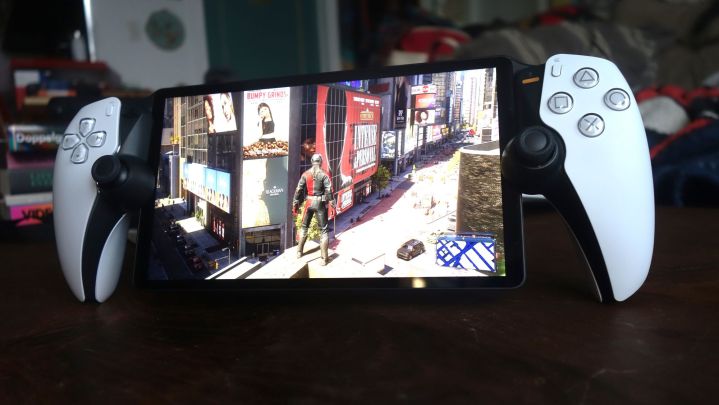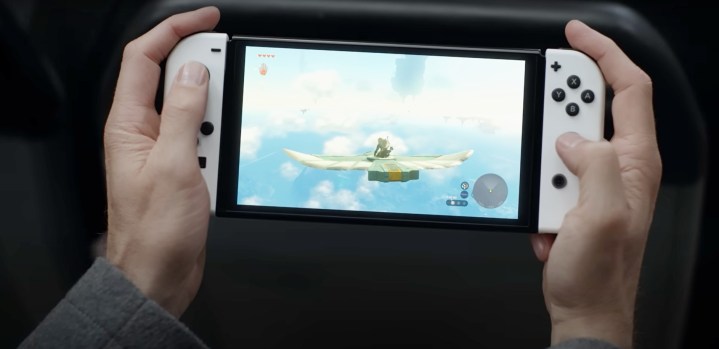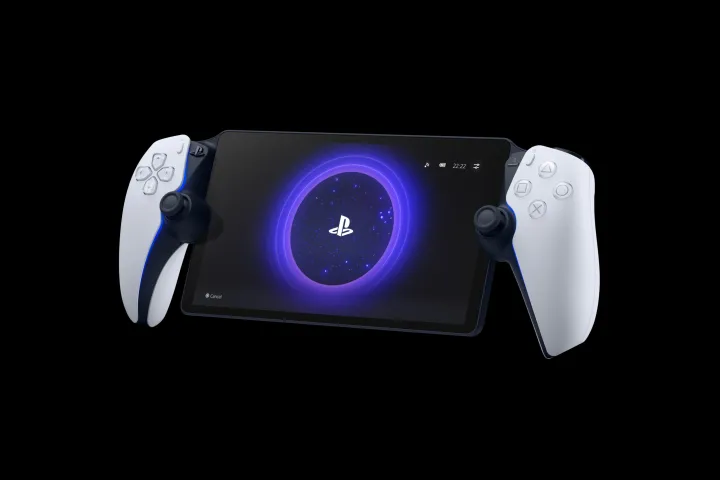Handheld gaming has come back in a big way this past generation. Nintendo has reinvigorated the market with the best Switch games captivating players, but this has also inspired other companies to try and cater to this market. The PlayStation Portal is PlayStation’s handheld accessory that aims to give a similar experience to its fanbase. But is it as good as something like the Nintendo Switch OLED and have the titles to compete with all the upcoming Switch games? Is the PlayStation Portal even a handheld or just a fancy controller?
If you’re debating between the Nintendo Switch and PlayStation Portal, here’s a full breakdown of how the two devices stack up.
Nintendo Switch Vs. PlayStation Portal specs
When it comes to specs, let’s start with the easy comparisons.
| PlayStation Portal | Nintendo Switch | |
| Display | 8-inch LCD | 6.2-inch LCD or 7-inch OLED |
| Resolution | 1080p | 720p in handheld mode, up to 1080p docked |
| Refresh Rate | 60Hz | 60Hz |
| Connectivity | Wi-Fi | Wi-Fi |
| Bluetooth | No | Yes |
| Cloud Gaming Support | No | Select titles |
| Battery life | 7-9 hours | 5-9 hours |
The PlayStation Portal wins out in most spec categories, specifically in screen size and resolution. It can output in full 1080p HD while the Switch, in handheld mode, can only reach 720p at a smaller screen size. The only edge you could give the switch is the option to get an OLED screen for greater colors. The only downside to the Portal here is that it can’t be used for any cloud gaming, while there are a few games you can stream on Switch. Battery life isn’t a big differentiator, but is slightly higher in the Portal, but will be game-dependent.
The real thing to consider here is that the PlayStation Portal cannot be used without a Wi-Fi connection to your PS5. This is a remote-play device, meaning it cannot function on its own like the Switch. You won’t be able to whip out your Portal on a bus ride or plane without a connection to your PS5 as you could with a Switch. This also makes input lag a potential factor since streaming games from your console will mean the responsiveness will vary based on your own home internet speeds.
Nintendo Switch vs. PlayStation Portal graphics

Graphically speaking, the PlayStation Portal has the Switch beat just looking at raw numbers. We already discussed how it can display games at 1080p over the Switch’s 720p, but beyond that, the PS5 has some of the most technically impressive-looking games on the market. The Switch, while absolutely having its own catalog of visually impressive games, is running much weaker and older hardware and simply can’t output the same level of fidelity.
Nintendo Switch vs. PlayStation Portal games

Speaking of games, this one will all come down to personal preference.
If you’re are PlayStation fan, or simply want the biggest possible library of games to play, the Portal can run any game the PS5 can. That includes all the first-party exclusives, plus just about every third-party game released. The only major omissions would obviously be Xbox and Nintendo exclusives.
The Switch’s library is undoubtedly great, but also heavily dependent on Ninteno’s first-party games such as Mario Wonder and Tears of the Kingdom. It arguably has just as high-quality games as PlayStation, but targets different audiences. Third-party support, while not absent, is much more limited and usually stripped down in terms of graphics and performance.
Nintendo Switch vs. PlayStation Portal price

The Nintendo Switch has remained at $300 for the base model and $350 for the OLED model for its entire lifecycle, with no signs of dropping until a new system is released.
The PlayStation Portal on its own costs $200, but does require you to either already own or purchase a PS5. PS5, with the new slim models, now costs either $450 for the digital version or $500 for the disc version.
Nintendo Switch vs. PlayStation Portal reviews

Our review of the PlayStation Portal was mixed. We appreciated its low price, comfort level, sharp display, and integrated features from the DualSense controller, but disappointed that it has a very limited use case.
On the other hand, we had extremely high praise for the Nintendo Switch upon launch. While everything we loved about the console remains true all these years later, it is impossible to ignore that it has been struggling to run more intensive games released as of late. There are also rumors of a potential successor console in the not-too-distant future that could make investing in this hardware now a poor choice.




